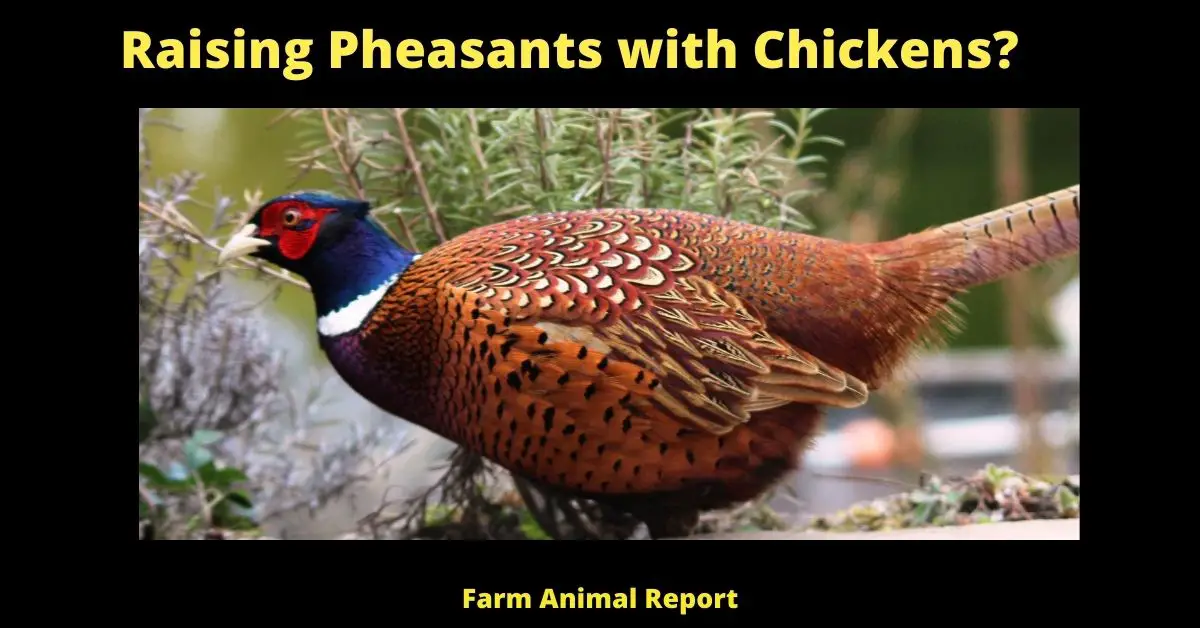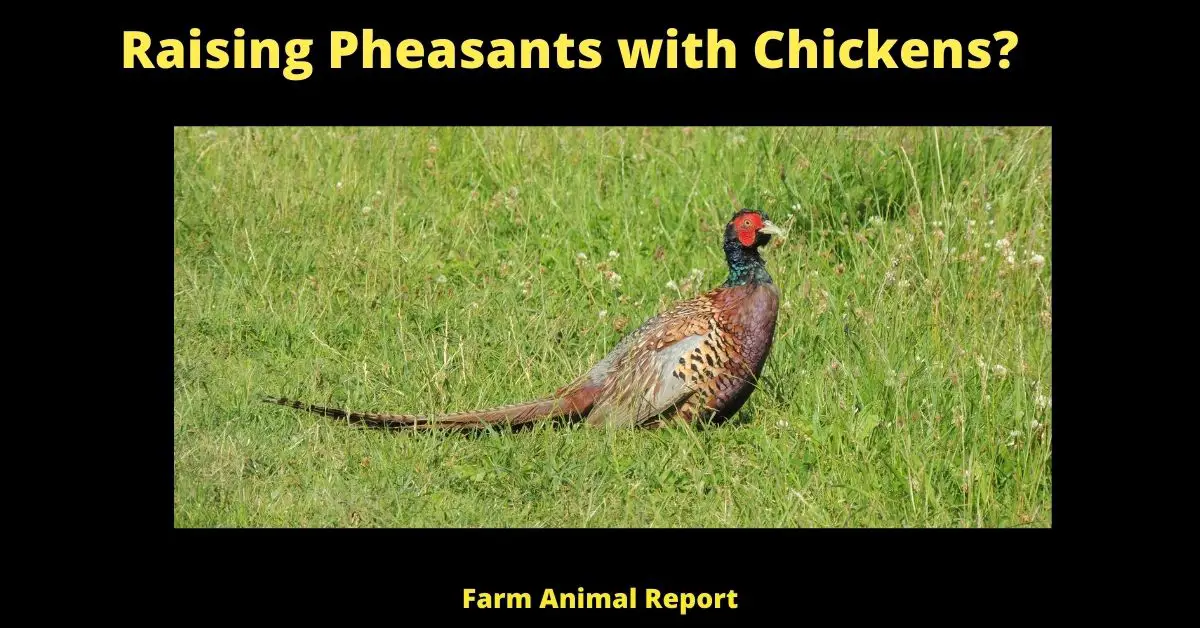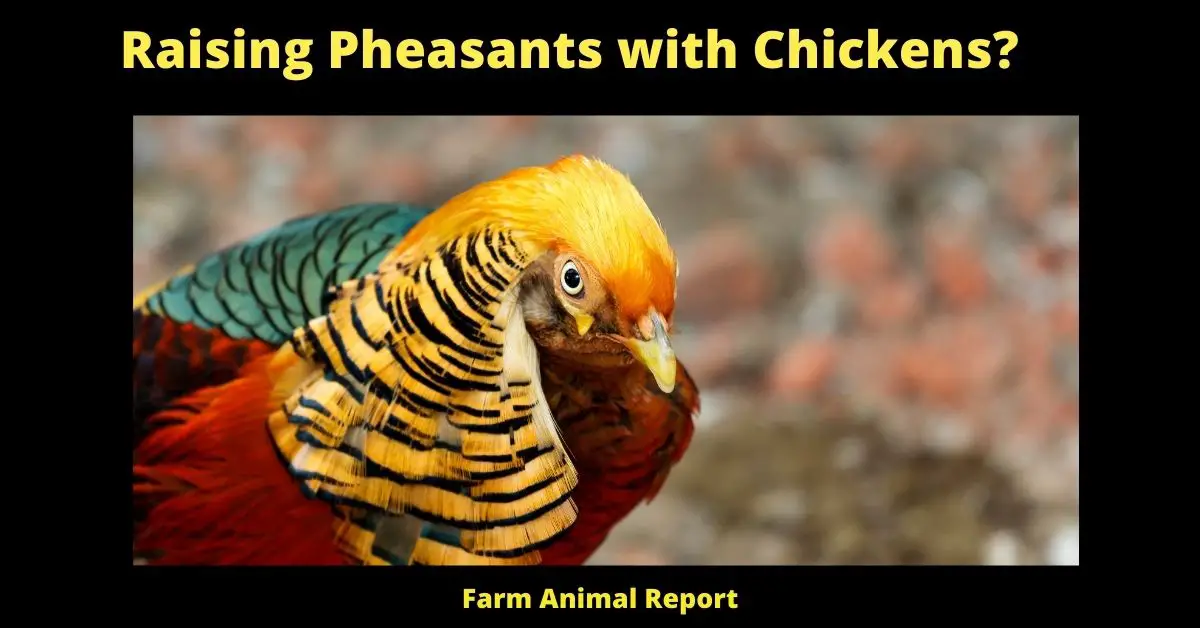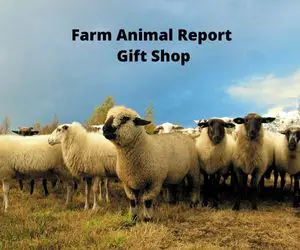Can Pheasants Live with Chickens?
It’s not uncommon these days to hear about people who are raising pheasants with chickens. In fact, it’s becoming more and more popular as people realize the benefits of doing so. If you’re curious about this trend, or if you’re thinking of giving it a try yourself, then read on! In this article, we’ll discuss the basics of how to raise pheasants with chickens, including the pros and cons of doing so. Can Pheasants Live with Chickens?
Introducing the Idea of Raising Pheasants with Chickens
Adding Pheasants to your chicken flock is a great way to get the best of both worlds – the beauty of pheasants and the utility of chickens. Pheasants are relatively easy to care for, and they make excellent additions to any farm or homestead. Chickens, on the other hand, are hardy birds that are known for their egg-laying abilities. When you raise pheasants with chickens, you can enjoy the benefits of both species!
Jump to 12 Ways to Make Money by Chicken Farming **CHARTS**
The Benefits of Raising Pheasants with Chickens include:
- Pheasants will help keep your property free of pests and insects.
- They are also known to eat snakes, mice, and other small rodents.
- Pheasants are beautiful birds, and their feathers can be used for a variety of purposes.
- Chickens and pheasants can live peacefully together, provided that you have enough space for both species.
- Pheasants are relatively easy to care for, and they make great additions to any farm or homestead.
- Pheasants are also poultry – so if you’re interested in raising your own poultry for meat or eggs, then pheasants are a great option to consider! Raising Pheasants with Chickens?
Check Out Amazon for Educational Resources for Breeding Chickens
What you’ll need
If you’re thinking of adding pheasants to your flock, there are a few things you’ll need to get started:
- A safe and secure enclosure for the pheasants. This can be a fenced-in area, a pen, or even an aviary.
- Pheasant feed. You can purchase this at most feed stores, or online.
- Water containers for the pheasants. Make sure these are clean and free of debris.
- Nesting boxes for the hens. These can be purchased at most feed stores, or online.
- A heat lamp for the enclosure, if you live in a cold climate.
Tips for success
Here are a few tips to help you successfully raise pheasants with chickens:
- Start with a small number of birds, and increase the flock size gradually over time.
- Make sure the enclosure is large enough to accommodate both the chickens and the pheasants.
- Provide plenty of hiding places and perches for the pheasants, so they can escape from the chickens if necessary.
- Monitor the flock closely, and separate any birds that seem to be causing problems.
- Be prepared to deal with predators, such as foxes and hawks.
Troubleshooting common problems
Here are a few tips to help you troubleshoot common problems that can occur when raising pheasants with chickens:
- If the pheasants are pecking at the chickens, try providing more perches and hiding places for the pheasants.
- If the chickens are bullying the pheasants, try separating the two species into different enclosures.
- If you’re having trouble keeping predators out, try installing a fence around the enclosure.
- If you’re having trouble keeping the birds warm in winter, try using a heat lamp.

Feeding Both Chickens and Pheasants
Raising Pheasants with your chickens works great, one of the things you will need to implement, is pheasants’ nutritional requirements are different from chickens.
What do Pheasants Eat?
Pheasants are omnivores and eat mostly bugs, but also like some vegetation. A good game bird feed will have 20-22% protein for chicks and 18-20% for adults. You can find this type of feed at your local farm store or online retailers that sell poultry feeds. I recommend using a gamebird feeder so the pheasants can’t perch in it and make a mess.
What Do Chickens Eat?
Chickens are mostly herbivores and eat mostly seeds, grains, and greens. A good laying hen feed will have 16-18% protein for layers and 14-16% for maintenance. You can find this type of feed at your local farm store or online retailers that sell poultry feeds. I recommend using a chicken feeder so the chickens can’t perch in it and make a mess.
Both types of birds will need grit. Grit is what helps them grind up their food in their gizzard. Chickens free range, usually pick up enough grit from dirt and rocks. If you are not letting your chickens free-range, then you will need to provide a dish of grit for them.
Pheasants are also free-range, but if you are not letting your pheasants free-range, then you should put out a dish of grit for them as well. You can find grit at your local farm store or online retailers that sell poultry feeds.
One other thing to consider when raising both chickens and pheasants together is that pheasants can fly and chickens can’t. This means that if you have a predator problem, the pheasants will be able to escape and the chickens will not. I recommend using a chicken tractor or some other type of enclosure that has a roof on it, so the chickens are safe at night.
Benefits of Keeping Golden Pheasants with Chickens
You can add amazing beauty to your Chicken Flock by adding Golden Pheasants. Pheasants make great flock mates with chickens and they will help protect your chickens from predators. Pheasants are also very good at finding food so they will help supplement the chicken’s diet. The only downside to keeping pheasants with chickens is that the pheasants may pick on the smaller chicks. If you have a problem with pheasants picking on your chicks, you can always pen them up together until the chicks are big enough to defend themselves. Jump to 10 Easy Ways to Make **MONEY** Peacock Farming
Pros and Cons of Raising Pheasants
The Pros:
- Pheasants are beautiful birds that come in a variety of colors including gold, silver, and black.
- Pheasants are very good at finding food and will help supplement the chicken’s diet.
- Pheasants make great flock mates with chickens and will help protect your chickens from predators.
The Cons:
- Pheasants may pick on smaller chicks.
- You will need to pen up the pheasants with the chickens until the chicks are big enough to defend themselves.
What is the History of Golden Pheasants?
Pheasants originally came from Asia, and golden pheasants specifically are native to China. They were first introduced to Europe in the 1800s, and then to North America in the early 1900s. Golden pheasants have been kept as pets and for hunting purposes since they were first introduced.
Pheasants are generally found in wooded areas with plenty of underbrush. Golden pheasants prefer living near streams or other water sources. In the wild, golden pheasants eat a variety of things including insects, small mammals, reptiles, seeds, and fruits.
Golden pheasant chicks are born fully feathered and able to fly short distances within a few days of hatching. Pheasant chicks grow quickly and can be fully grown within six months. Pheasants typically live for four to five years in the wild but can live up to ten years in captivity.
What is the Cost of Raising Pheasants
The cost of raising pheasants is relatively low compared to other poultry birds. You can expect to spend around $25 per bird for everything you need including food, water, housing, and bedding. If you are planning on releasing the pheasants into the wild, you will need to purchase a game license which costs around $100 per year.
Raising Pheasants for Profit
You can make a profit from raising pheasants by selling their meat or eggs. Pheasant meat is very lean and has a gamey flavor that many people enjoy. Pheasant eggs are smaller than chicken eggs but they are still edible. You can also sell the feathers of the pheasants which are used for a variety of purposes including fly fishing lures and arts and crafts.
The ways you can make money with pheasants are:
- Feathers – Pheasant feathers can be sold for a variety of purposes including fly fishing lures and arts and crafts.
- Meat – Pheasant meat is very lean and has a gamey flavor that many people enjoy.
- Eggs – Pheasant eggs are smaller than chicken eggs but they are still edible. You can also sell the feathers of the pheasants which are used for a variety of purposes including fly fishing lures and arts and crafts.
Will Pheasants Return to Coop?
Pheasants are not as good at returning to their coop as chickens are. If you let your pheasants free-range, you will need to make sure they have a safe place to go at night. Pheasants will also roost in trees which can make them more susceptible to predators.
- Training – you can train your pheasants to return to their coop using a variety of methods including food, water, and shelter.
- Pen – You can also keep your pheasants in a pen where they will be safe from predators.
- Tree roosts – If you have trees on your property, you can provide roosts for your pheasants to sleep in at night.
- Feeding – You can also attract pheasants back to their coop by feeding them.
- water – Pheasants need water to drink and bathe in. You can put a small pool or birdbath in their coop to provide them with water.
- Shelter – Pheasants need a place to hide from predators and the elements. You can provide a small shed or hut for them to use as shelter.
- Clipping Wings – You can also clip the wings of your pheasants to prevent them from flying away.
What Are the Different Types of Pheasants?
There are many different types of pheasants including golden, silver, and black. Golden pheasants are the most popular type of pheasant and are often kept as pets or for hunting purposes. Silver pheasants are less common and are mostly found in zoos or aviaries. Black pheasants are the least common type of pheasant and are mainly found in the wild.

Can Pheasants Free (Range? 12 Tips)
Yes, pheasants can free range but they are not as good at finding food as chickens. Pheasants will also roost in trees which can make them more susceptible to predators. If you do decide to let your pheasant free-range, you will need to make sure they have a safe place to go at night.
- Great Foragers – Pheasants are great foragers and will eat a variety of things including insects, seeds, berries, and leaves.
- Can Fly – Pheasants can fly but they are not as good at it as birds like chickens. This is because their wings are shorter in proportion to their body size.
- Predators – Pheasants are susceptible to predators such as foxes, coyotes, and hawks.
- Habitat – Pheasants need a habitat with plenty of cover from predators and the elements. They also need a source of food and water.
- Roosting – Pheasants will roost in trees which can make them more susceptible to predators.
- Nesting – Pheasants will build their nests on the ground which makes them vulnerable to predators and the elements.
- Eggs – Pheasants lay between eight and ten eggs per clutch. The eggs are incubated for about three weeks before they hatch.
- Chicks – Baby pheasants are called chicks. They are born with their eyes open and are able to walk and feed themselves within a few hours of hatching.
- Fledglings – Baby pheasants that have grown their feathers and can fly are called fledglings. Fledglings leave the nest after about four weeks but they will continue to be cared for by their parents for several weeks after that.
- Migration – Pheasants do not migrate but they will move to different areas in search of food and water.
- Shedding – Pheasants shed their feathers once a year to help them stay cool in the summer and warm in the winter.
- Life Expectancy – Pheasants typically live for about five years in the wild and up to ten years in captivity.
Pros and Cons of Raising Pheasants
Are you thinking about raising pheasants? It’s a decision that can have both positive and negative aspects. In this article, we’ll take a closer look at the pros and cons of raising pheasants, so you can make an informed decision.
What Are Pheasants?
Pheasants are a type of bird that belong to the family Phasianidae. They are commonly found in Asia and Europe, but have also been introduced to other parts of the world for hunting and ornamental purposes. There are several different species of pheasants, but the most common species raised in captivity are the ring-necked pheasant and the golden pheasant.
Pros of Raising Pheasants
Provides a Natural Food Source
One of the main advantages of raising pheasants is that they provide a natural food source. Pheasant meat is a lean and healthy protein source, and many people find it to be delicious. If you have a large property, you could raise pheasants for personal consumption, or you could sell the meat to others.
Source of Income
Another benefit of raising pheasants is that they can provide a source of income. If you have a large enough property and the proper permits, you could raise pheasants for hunting purposes. There are many people who enjoy hunting pheasants, and they are willing to pay for the opportunity. Additionally, you could sell the feathers and eggs to others for various purposes.
Low Maintenance
Compared to other types of livestock, pheasants are relatively low maintenance. They don’t require a lot of space, and they are generally easy to care for. Pheasants can be kept in a small coop, and they don’t require a lot of attention.
Aesthetically Pleasing
Pheasants are beautiful birds with vibrant colors and unique feather patterns. If you’re raising pheasants for ornamental purposes, they can add a lot of beauty to your property. Many people find the sight of pheasants to be soothing and relaxing.
Easy to Raise
Finally, pheasants are generally easy to raise. They don’t require a lot of special equipment or knowledge, and they can adapt to a variety of climates. As long as you provide them with the proper food and shelter, they should thrive.
Cons of Raising Pheasants
Limited Market
One of the biggest disadvantages of raising pheasants is that there is a limited market for them. While some people enjoy pheasant meat and feathers, it’s not as widely consumed or used as other types of livestock. This means that it can be difficult to find buyers for your pheasants, especially if you’re raising them for hunting purposes.
Difficult to Breed
Another challenge of raising pheasants is that they can be difficult to breed. Pheasants have specific breeding requirements, including the need for a large nesting area and a specific diet. Additionally, it can be difficult to ensure that the chicks survive, as they require special care and attention.
Specialized Diet
Pheasants have a specialized diet that can be difficult and expensive to provide. They require a high-protein diet that includes insects, seeds, and other small prey. If you’re unable to provide them with the proper diet, they may not thrive and could become sick.
High Start-Up Costs
Another potential drawback of raising pheasants is that there are high start-up costs involved. You’ll need to invest in a coop or aviary, feed, and equipment to ensure that the birds have a safe and comfortable living environment. Additionally, if you’re raising pheasants for hunting purposes, you’ll need to have the proper permits and licenses.
Predators
Pheasants are vulnerable to predators, including foxes, raccoons, and other animals that may be present in your area. If you’re raising pheasants, you’ll need to take steps to protect them from predators, such as by building a secure coop or using netting to cover the enclosure.
FAQs
Can I raise pheasants without a license?
In most cases, you will need a license to raise pheasants, especially if you’re raising them for hunting purposes. It’s important to check with your local government to determine what permits and licenses are required in your area.
What is the lifespan of a pheasant?
Pheasants typically have a lifespan of 3-5 years in the wild, but they can live longer in captivity.
How many pheasants can I raise in my backyard?
The number of pheasants you can raise in your backyard will depend on the size of your property and the regulations in your area. It’s important to check with your local government to determine what the rules are.
Are pheasants aggressive?
Pheasants can become aggressive during the breeding season, but they are generally docile birds.
Can I release pheasants into the wild?
Releasing pheasants into the wild is generally not recommended, as it can have negative impacts on native species and ecosystems. If you’re interested in hunting pheasants, it’s best to raise them in a controlled environment.
Raising Pheasants with Chickens?
Raising pheasants with chickens can be a fun and rewarding experience. With a little planning and preparation, you can successfully raise both species!
If you’re thinking about adding pheasants to your flock, there are a few things you should keep in mind. Pheasants are social creatures and need to be around other pheasants or birds of similar size.
They also require more space than chickens, so you’ll need a larger coop and run if you want to keep them together. Pheasants also like to roost in trees, so if you have pheasants make sure they have plenty of places to perch.
Pheasants are a popular game bird in many parts of the world. They are known for their delicious meat, as well as their beautiful plumage. If you are considering raising pheasants, there are a few things you should know. One of the biggest pros of raising pheasants is that they are relatively easy to care for. They do not require a lot of space, and they are not particularly picky eaters.
Pros and Cons of Raising Pheasants
Pheasants also reproduce quickly, so you can restock your flock relatively easily. However, there are a few downsides to raising pheasants as well. One is that they can be very noisy birds. If you live in a quiet neighborhood, your pheasants may not be welcome neighbors.
In addition, pheasants can also be quite messy. Their droppings can contaminate water sources and spread disease, so it is important to take measures to keep your pheasant coop clean. Overall, raising pheasants can be a rewarding experience, but it is important to do your research before you get started.
In conclusion, raising pheasants can be both rewarding and challenging. While they provide a natural food source, a source of income, and are aesthetically pleasing, they also require a specialized diet, can be difficult to breed, and are vulnerable to predators. Before you decide to raise pheasants, it’s important to consider both the pros and cons and make an informed decision.





